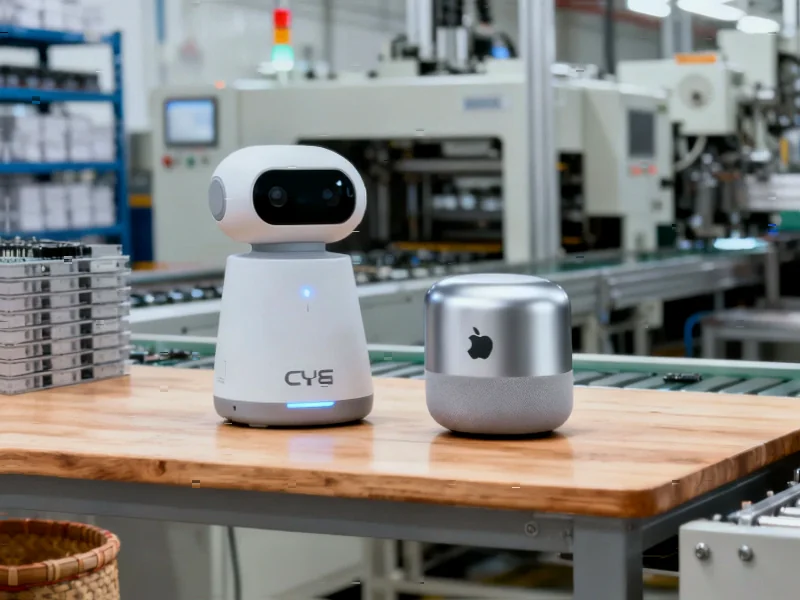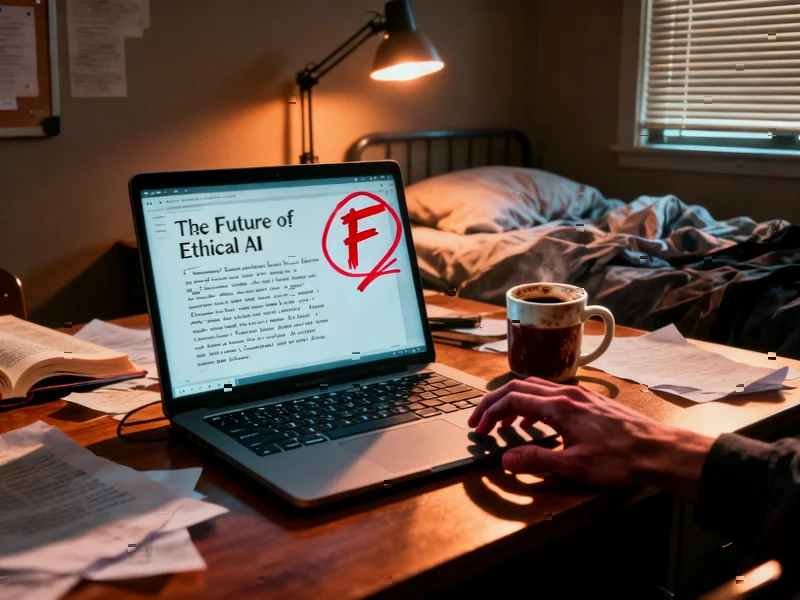According to Fortune, Federal Reserve Chair Jerome Powell delivered a stark warning about AI’s impact on labor markets during Wednesday’s FOMC press conference, revealing that adjusted payroll data shows “job creation is pretty close to zero.” Powell connected this slowdown directly to AI adoption, noting “a significant number of companies” have announced layoffs or hiring pauses while explicitly citing artificial intelligence as the reason. The Fed cut interest rates by a quarter point to 3.75%-4% range, citing “downside risks to employment” despite elevated inflation. Recent corporate announcements illustrate the trend, with Amazon cutting 14,000 middle managers and Challenger, Gray & Christmas reporting nearly 946,000 layoffs this year—the highest since 2020—including over 17,000 explicitly tied to AI. This creates what Powell called a “very difficult” policy dilemma where AI boosts productivity but weakens labor markets.
Table of Contents
The Productivity Paradox in Real Time
What we’re witnessing is a real-time manifestation of the productivity paradox—where technological advancement doesn’t automatically translate into broad economic benefits. While companies are investing heavily in AI infrastructure and seeing efficiency gains, these improvements aren’t flowing through to job creation or wage growth for most workers. Historically, technological revolutions created new job categories even as they destroyed old ones, but AI’s capability to automate cognitive tasks means it’s targeting the very entry-level and middle-management positions that traditionally served as career launching pads. The concerning aspect is that this transition appears to be happening faster than previous industrial revolutions, leaving less time for workforce adaptation.
Structural Shifts in Labor Economics
The implications for labor economics are profound. We’re likely seeing the beginning of a structural shift where the relationship between GDP growth and employment becomes permanently decoupled. Companies can now achieve revenue growth without proportional hiring increases—Amazon’s recent layoffs amid continued expansion being a prime example. This challenges fundamental assumptions about full employment and what constitutes a healthy labor market. The traditional Phillips curve relationship between unemployment and inflation may need rethinking in an economy where productivity gains come from automation rather than human labor expansion.
The Imperfect Policy Toolkit
Central bankers are facing their most complex challenge since the 2008 financial crisis. As Powell noted, the Fed confronts “upside risks to inflation, downside risks to employment”—a scenario where traditional monetary policy tools become contradictory. Lowering interest rates might theoretically stimulate hiring, but when companies are fundamentally rethinking their workforce needs due to AI capabilities, cheap capital alone may not reverse the trend. Meanwhile, the K-shaped recovery Powell described means aggregate economic data masks severe disparities, with higher-income households benefiting from AI-driven stock gains while lower-wage workers face both unemployment pressures and inflation.
The Changed Corporate Calculus
What’s particularly telling is that companies are now openly discussing AI as a justification for workforce reductions to investors—something that would have been carefully couched in corporate jargon just two years ago. This represents a significant shift in how business leaders view labor versus technology investments. The calculus has changed: when AI can perform tasks ranging from customer service to middle management analysis, the return on investment comparison between hiring humans and implementing automation has tipped decisively toward technology. This isn’t just about cost-cutting—it’s about reimagining organizational structures entirely.
The Generational Divide in Employment
The impact on younger workers deserves particular attention. With unemployment among recent college graduates exceeding 5% and AI threatening the very entry-level positions that traditionally launched careers, we’re seeing a generation making defensive educational choices. The surge in graduate school applications represents not just career advancement but strategic timeout from a deteriorating job market. This creates longer-term implications for skill development, career progression, and even demographic trends like household formation and home ownership timelines.
Beyond the Bubble Concerns
Powell’s distinction between today’s AI investment and the dot-com bubble is crucial but may be overly reassuring. While he’s correct that today’s tech companies have actual earnings, the capital expenditure surge in AI infrastructure carries its own risks. The concentration of investment in data centers and specialized hardware creates potential bottlenecks and could lead to misallocation if AI adoption progresses more slowly than anticipated. More concerning is that this investment boom isn’t translating into broad-based economic benefits—it’s creating what economists call a “winner-take-most” dynamic where gains accrue disproportionately to technology providers and large enterprises.
Navigating the Great Freeze
The path forward requires recognizing that we’re in uncharted territory. Traditional economic indicators may no longer provide clear signals, and policy responses will need to be more nuanced than simple interest rate adjustments. Workforce retraining, education reform, and potentially new forms of social contracts between employers and employees may be necessary. The “Great Freeze” in hiring that some economists describe could thaw into a fundamentally different labor landscape—one where job stability becomes the exception rather than the norm, and where continuous skill adaptation becomes the price of employability.



